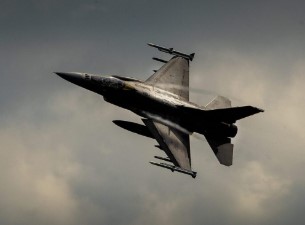Belgium has announced a strong new commitment to help Ukraine in its ongoing war. The country will provide €1 billion in aid this year and continue giving the same amount every year as long as the current government remains in power.
Belgium’s Bold Step to Support Ukraine’s Air Force
A major part of this support includes military help—especially fighter jets and the crucial spare parts needed to keep them operational.
Belgium plans to send four F-16 fighter jets to Ukraine. But instead of all four being ready to fly, only two will be fully operational. The other two will be delivered as spare parts in 2025. These parts will be used to fix and support the Ukrainian F-16s that are already in action. The two working jets will arrive in 2026.
This shows how Belgium is helping in a smart and useful way. Rather than just sending planes, they are also helping Ukraine keep the ones they already have in the sky. War takes a heavy toll on machines. Fighter jets are no exception. Engines wear out, parts break, and systems fail. Sending parts for repair is just as important as sending new planes.
US Greenlights 5.58 Billion Military Sale of F-16 Jets to Philippines
How Spare Parts Can Make a Big Difference
F-16s are powerful fighter jets used by many NATO countries. They can fly fast, fight enemy planes, hit targets on the ground, and even collect information through special sensors. But like any machine, they need constant care. If one small part fails, the whole jet might have to stay on the ground.
That’s why Belgium’s plan to send two F-16s as spare parts is so important. These planes will not fly but will be taken apart. Their engines, radars, and other parts can be used to fix or replace broken systems in other jets. This idea is called “cannibalization” and has been used in wars before. It allows countries to keep their jets flying without waiting for new parts from factories.
Ukraine already has some F-16s, thanks to donations from countries like the Netherlands and Denmark. These jets are being used in real battles. So they break down more often. Having spare parts available nearby can help Ukrainian technicians quickly repair jets and send them back into the fight.
Portugal’s Powerful F-16 Jets Replace Costly Dutch F-35s in NATO Baltic Skies Realignment
In past wars, countries like the United States used this strategy to keep their jets working. For example, during the Vietnam War, the U.S. kept extra jets to pull parts from. The same idea is now helping Ukraine stay strong in the sky.
Even a single working engine or radar can be the difference between a jet sitting in a hangar and one defending a city. With Russia continuing to attack Ukraine from the air, having more jets in the sky is vital. These spare parts could help Ukraine protect towns, stop missiles, and support its soldiers on the ground.
Timing Matters in War: The 2026 Delay
While this support from Belgium is helpful, not all of it is coming right away. The two fully working F-16s will only be sent in 2026. That means Ukraine has to wait over a year to get those flying jets. The reason is simple—Belgium is still getting its own new fighter jets, the F-35s. Until those arrive, it needs to hold on to some F-16s for its own defense.
Still, the two jets being sent as spare parts in 2025 will help immediately. These parts can be used as soon as they arrive. Ukraine can take engines, radars, and other systems and put them into jets that need repairs.
NATO’s F-16 Gamble Strengthens Ukraine, Provoking Russia
Even though the delay may be frustrating, Belgium is doing what it can. With only 11 million people and a small defense budget, it’s not a big military country. But its €1 billion promise each year shows it’s willing to help in a big way. In fact, Belgium’s aid is more than some larger countries are giving.
This aid also supports Belgium’s own defense industry. Companies that make guns, cannons, and other military tools might get contracts to supply Ukraine. This could mean more jobs in Belgium while also helping Ukraine’s army.
Back in Ukraine, the real benefit will be seen in the skies. Every F-16 that can fly is a chance to defend against Russian air attacks. With new weapons, like guided bombs and anti-radar missiles, F-16s can strike important enemy targets and keep Ukraine’s ground forces safer.
War is not just about numbers—it’s about readiness. A small number of jets, kept in good shape, can do more than a larger fleet that can’t fly. Belgium’s spare parts will help Ukraine stay ready, even if the wait for flying jets continues.
This strategy—sending spare parts along with full aircraft—is not flashy. But it is smart. It gives Ukraine what it truly needs: the ability to keep flying, to keep defending, and to keep fighting back.

